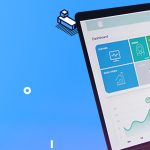What’s New With Google Analytics 4
Google Analytics is used by millions of organisations, large and small, to better understand customer preferences and develop better experiences for them. With more commerce shifting online and businesses under increasing pressure to make every marketing dollar count, digital analytics insights have never been more important.
Google Analytics 4 was released in October 2020, and it is the most recent version of the company’s analytics package (GA4). Google Analytics 4 (GA4) launched with many new features, and Google rolled out several updates in early 2021. It’s a good time to explore GA4’s new offerings and consider upgrading.
Google’s new Analytics version is now the default for data collection and analysis. GA4 works differently from previous versions, focusing on privacy and cross-platform tracking. It offers marketers new insights and differs from the old version in data handling and user interface.
Millions of businesses and websites utilise Google’s Analytics reporting service to track user activity across web domains, mobile apps, and offline APIs. Most businesses are familiar with this platform as a tool for tracking web traffic, monitoring vital marketing channels, and measuring key performance indicators (KPIs). Google Analytics 4 is a new, more user-friendly version.
Google Analytics 4 introduces significant enhancements over its predecessor. A key feature is the new data modelling function that uses artificial intelligence to bridge data gaps that may arise from cookie consent rules, blocked JavaScript, and privacy constraints. Additionally, the default user interface of the new Google Analytics has been extensively redesigned. Here are some of the most important differences:
What is Google Analytics 4 and how does it work?
Google describes the new Google Analytics as a next-generation “privacy-first” tracking system, offering cross-channel measurement and AI-powered predictive analytics in one place. The new Analytics can infer website traffic and user behaviour data without relying on page “hits,” thanks to Google’s advanced machine learning algorithms.
Google Analytics 4, the latest monitoring platform, was released recently. It introduces a completely new technology, distinct from Universal Analytics, commonly known as “Google Analytics.”
For those new to Google Analytics, this isn’t the first introduction of a new platform. Google Analytics 4 represents the evolution of Google Analytics through various updates over the years.
Since acquiring the tracking platform Urchin in 2005, Google has launched and re-launched Google Analytics multiple times. Previous versions, such as Classic Analytics, Universal Analytics, and Google Analytics for Firebase, focused on tracking either web pages or app features, but not both.
Last year, Google made a significant advancement. They rolled out a Google Analytics “App+Web” solution, which was essentially Google Analytics for Firebase with added web-tracking capabilities. This served as a beta launch for Google Analytics 4, which builds on the same App+Web tracking foundation but introduces many new features.
The new Google Analytics 4 highlights
- It’s designed with machine learning as the primary method of data collection, with “modelling” that can extrapolate from historical data and generate predictions about site traffic and user behaviour. The new AI-powered “Insights” tool is designed to highlight relevant information for marketers automatically.
- It aims to provide marketers with a “more comprehensive understanding of the client journey across devices.” And it appears to be more concerned with tracking the entire buyer trip, rather than simply particular metrics across devices, pages, and segments.
- It’s built to be “future-proof,” meaning it can work without cookies or identifying information.
- Instead of the views and segments used by older Universal Analytics properties, Google Analytics 4 uses “data streams.”
- GA4 does not have a “view” level section. Unlike classic Universal Analytics, which has three levels (Account, Property, and View), GA4 has only two levels: Account and Property.
- Google Analytics 4 claims to allow editing, tracking, and fine-tuning of events within the UI, whereas “event tracking” in classic Analytics needed changed Analytics code or the gtag.js script. This includes behaviours such as clicks, page scrolling, and more.
GA4 is a model that is based on events.
Before, web-based Google Analytics versions mainly tracked pageviews. Enhanced e-commerce supported some events, but these were largely confined to shopping functions.
Google’s new product aims to create a unified tracking system for all platforms, including web and mobile. Google Analytics 4 now fully adopts event-based tracking. This means GA4 receives all data as events instead of pageviews, offering greater flexibility.
Machine Learning Provides Insights
Machine learning revolutionizes many digital aspects. Google Analytics 4 harnesses this through automated insights and predictive metrics, transforming data analysis.
The Insights button in the top right corner of your interface can be used to get automated insights. A search area and a waterfall menu of data insights pulled by Google Analytics appear in the resulting sidebar.
What factors does Google Analytics consider when deciding which insights to display to you?
The automated insights function gathers information from major and secondary variables that have experienced substantial trend shifts. To put it another way, anything unusually wonderful (or terrible) will be brought to your attention right away. You’ll never have to look for data oddities again with automated insights.
